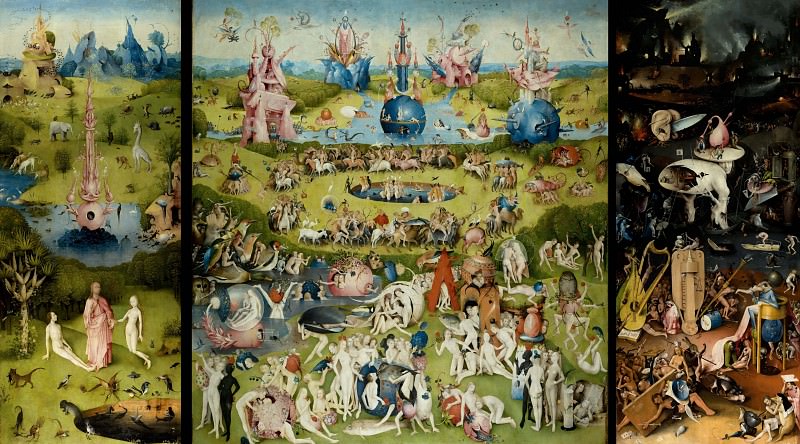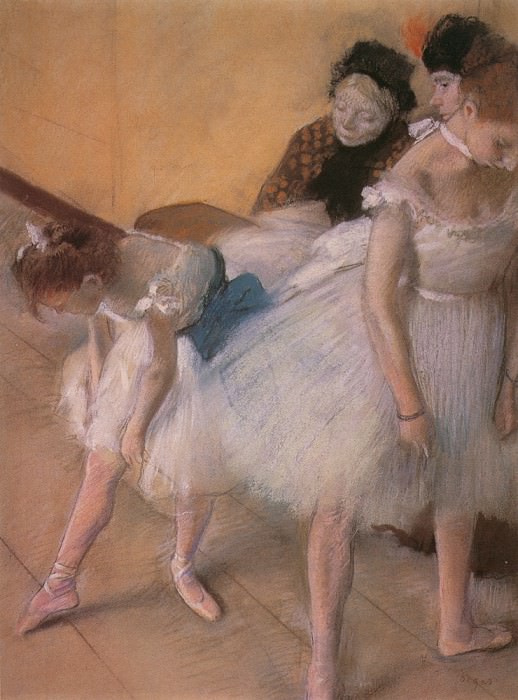Max Beckmann: A Comprehensive Exploration of His Art
Max Beckmann, an influential figure in the world of modern art, is celebrated for his distinctive and powerful visual language. His works, characterized by their intense emotionality and innovative stylistic approach, offer a profound insight into the complexities of human existence and societal transformation. This exploration delves into the rich tapestry of Beckmann's artistic career, tracing his evolution as an artist and the thematic concerns that shaped his oeuvre.
Early Life and Influences
Max Beckmann was born in Leipzig, Germany, in 1884. His early life was marked by a strong inclination toward the arts, nurtured by his family and the vibrant cultural environment of early 20th-century Germany. Beckmann's formal art education began at the Academy of Visual Arts in Leipzig, where he honed his technical skills and developed a keen interest in the evolving artistic movements of his time.
Beckmann's initial works were influenced by the Symbolist and Expressionist movements, which were pivotal in shaping his artistic sensibilities. The Symbolists, with their emphasis on conveying inner experiences and emotions through abstract forms, resonated with Beckmann's own desire to explore the deeper dimensions of human consciousness. Similarly, the Expressionists' focus on the emotional impact of art and their innovative use of color and form provided a fertile ground for Beckmann's creative experimentation.
The Development of Beckmann's Style
Beckmann's style underwent significant transformation throughout his career, reflecting his responses to the changing political and social landscapes of his time. His early works were marked by a fascination with mythological and historical themes, often portrayed through a blend of realism and symbolism. These early pieces laid the groundwork for his later explorations of more personal and contemporary subjects.
As Beckmann's career progressed, his style evolved to incorporate elements of Cubism and Surrealism. This period saw a shift towards more fragmented and abstract compositions, with an emphasis on geometric forms and distorted perspectives. Beckmann's integration of these stylistic elements allowed him to convey complex psychological and existential themes with greater depth and intensity.
The Impact of War and Political Turmoil
The First World War had a profound impact on Beckmann's work, both thematically and stylistically. The brutality and chaos of the war era prompted a shift towards more harrowing and introspective subjects. Beckmann's wartime experiences, including his service as a medical orderly, left an indelible mark on his artistic vision. His war-related works, characterized by their stark imagery and raw emotional power, offer a poignant commentary on the human condition amidst conflict and suffering.
The rise of National Socialism and the subsequent political upheaval in Germany further influenced Beckmann's art. As a critical and dissenting voice, Beckmann faced persecution from the Nazi regime, which labeled his work as "degenerate." Despite these challenges, Beckmann continued to produce art that confronted the socio-political realities of his time, often using allegory and symbolism to critique authoritarianism and advocate for human rights.
Key Works and Artistic Achievements
Among Beckmann's most renowned works are his triptychs, which exemplify his ability to weave complex narratives and emotional depth into a single composition. The triptych format, with its three-panel structure, allowed Beckmann to explore thematic contrasts and juxtapositions in a dynamic and engaging manner. These works often depict scenes of human struggle and transformation, rendered with a distinctive blend of realism and abstraction.
One of Beckmann's seminal triptychs, "The Night," captures the artist's response to the tumultuous socio-political climate of the early 20th century. The central panel portrays a nightmarish vision of chaos and violence, while the flanking panels offer contrasting scenes of solace and despair. This triptych exemplifies Beckmann's mastery of narrative and form, as well as his ability to evoke a powerful emotional response from the viewer.
Another significant work, "The Argonauts," reflects Beckmann's fascination with mythological themes and his innovative approach to composition. The painting depicts a group of mythological figures engaged in a fantastical journey, rendered with a vivid and expressive use of color and form. "The Argonauts" exemplifies Beckmann's capacity to merge traditional and modern elements, creating a work that is both timeless and contemporary.
Legacy and Influence
Max Beckmann's impact on the art world extends beyond his own lifetime, with his work continuing to inspire and influence contemporary artists. His innovative use of form and color, combined with his exploration of complex psychological and social themes, has cemented his place as a pivotal figure in modern art. Beckmann's contributions to the development of modernist aesthetics and his critical engagement with societal issues remain influential in contemporary artistic discourse.
Art historians and critics frequently cite Beckmann's work as a key example of the intersection between art and political commentary. His ability to address profound existential and societal questions through his art has inspired subsequent generations of artists to explore similar themes in their own work. Beckmann's legacy is thus characterized by his unwavering commitment to artistic integrity and his profound impact on the evolution of modern art.
Conclusion
Max Beckmann's artistic journey is a testament to his extraordinary ability to capture the complexities of human experience through a unique and compelling visual language. From his early explorations of myth and symbolism to his later engagements with existential and political themes, Beckmann's work offers a rich and multifaceted perspective on the world. His contributions to modern art continue to resonate with audiences and artists alike, affirming his place as one of the most influential figures in the history of art. Through his innovative approach and profound thematic concerns, Max Beckmann has left an indelible mark on the art world, ensuring that his legacy endures for generations to come.
Max Beckmann, an influential figure in the world of modern art, is celebrated for his distinctive and powerful visual language. His works, characterized by their intense emotionality and innovative stylistic approach, offer a profound insight into the complexities of human existence and societal transformation. This exploration delves into the rich tapestry of Beckmann's artistic career, tracing his evolution as an artist and the thematic concerns that shaped his oeuvre.
Early Life and Influences
Max Beckmann was born in Leipzig, Germany, in 1884. His early life was marked by a strong inclination toward the arts, nurtured by his family and the vibrant cultural environment of early 20th-century Germany. Beckmann's formal art education began at the Academy of Visual Arts in Leipzig, where he honed his technical skills and developed a keen interest in the evolving artistic movements of his time.
Beckmann's initial works were influenced by the Symbolist and Expressionist movements, which were pivotal in shaping his artistic sensibilities. The Symbolists, with their emphasis on conveying inner experiences and emotions through abstract forms, resonated with Beckmann's own desire to explore the deeper dimensions of human consciousness. Similarly, the Expressionists' focus on the emotional impact of art and their innovative use of color and form provided a fertile ground for Beckmann's creative experimentation.
The Development of Beckmann's Style
Beckmann's style underwent significant transformation throughout his career, reflecting his responses to the changing political and social landscapes of his time. His early works were marked by a fascination with mythological and historical themes, often portrayed through a blend of realism and symbolism. These early pieces laid the groundwork for his later explorations of more personal and contemporary subjects.
As Beckmann's career progressed, his style evolved to incorporate elements of Cubism and Surrealism. This period saw a shift towards more fragmented and abstract compositions, with an emphasis on geometric forms and distorted perspectives. Beckmann's integration of these stylistic elements allowed him to convey complex psychological and existential themes with greater depth and intensity.
The Impact of War and Political Turmoil
The First World War had a profound impact on Beckmann's work, both thematically and stylistically. The brutality and chaos of the war era prompted a shift towards more harrowing and introspective subjects. Beckmann's wartime experiences, including his service as a medical orderly, left an indelible mark on his artistic vision. His war-related works, characterized by their stark imagery and raw emotional power, offer a poignant commentary on the human condition amidst conflict and suffering.
The rise of National Socialism and the subsequent political upheaval in Germany further influenced Beckmann's art. As a critical and dissenting voice, Beckmann faced persecution from the Nazi regime, which labeled his work as "degenerate." Despite these challenges, Beckmann continued to produce art that confronted the socio-political realities of his time, often using allegory and symbolism to critique authoritarianism and advocate for human rights.
Key Works and Artistic Achievements
Among Beckmann's most renowned works are his triptychs, which exemplify his ability to weave complex narratives and emotional depth into a single composition. The triptych format, with its three-panel structure, allowed Beckmann to explore thematic contrasts and juxtapositions in a dynamic and engaging manner. These works often depict scenes of human struggle and transformation, rendered with a distinctive blend of realism and abstraction.
One of Beckmann's seminal triptychs, "The Night," captures the artist's response to the tumultuous socio-political climate of the early 20th century. The central panel portrays a nightmarish vision of chaos and violence, while the flanking panels offer contrasting scenes of solace and despair. This triptych exemplifies Beckmann's mastery of narrative and form, as well as his ability to evoke a powerful emotional response from the viewer.
Another significant work, "The Argonauts," reflects Beckmann's fascination with mythological themes and his innovative approach to composition. The painting depicts a group of mythological figures engaged in a fantastical journey, rendered with a vivid and expressive use of color and form. "The Argonauts" exemplifies Beckmann's capacity to merge traditional and modern elements, creating a work that is both timeless and contemporary.
Legacy and Influence
Max Beckmann's impact on the art world extends beyond his own lifetime, with his work continuing to inspire and influence contemporary artists. His innovative use of form and color, combined with his exploration of complex psychological and social themes, has cemented his place as a pivotal figure in modern art. Beckmann's contributions to the development of modernist aesthetics and his critical engagement with societal issues remain influential in contemporary artistic discourse.
Art historians and critics frequently cite Beckmann's work as a key example of the intersection between art and political commentary. His ability to address profound existential and societal questions through his art has inspired subsequent generations of artists to explore similar themes in their own work. Beckmann's legacy is thus characterized by his unwavering commitment to artistic integrity and his profound impact on the evolution of modern art.
Conclusion
Max Beckmann's artistic journey is a testament to his extraordinary ability to capture the complexities of human experience through a unique and compelling visual language. From his early explorations of myth and symbolism to his later engagements with existential and political themes, Beckmann's work offers a rich and multifaceted perspective on the world. His contributions to modern art continue to resonate with audiences and artists alike, affirming his place as one of the most influential figures in the history of art. Through his innovative approach and profound thematic concerns, Max Beckmann has left an indelible mark on the art world, ensuring that his legacy endures for generations to come.
















